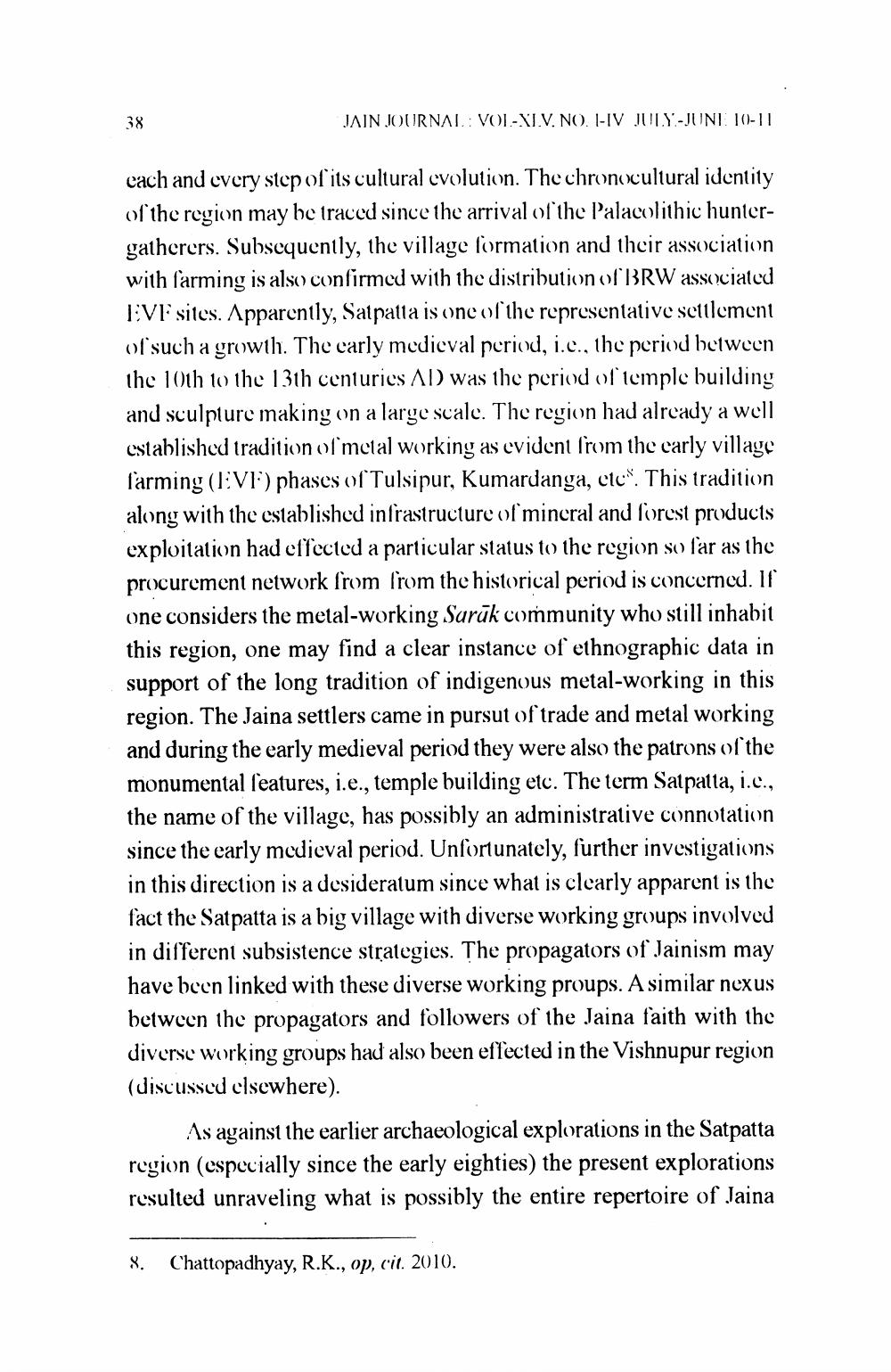________________
38
JAIN JOURNAL VOL-XIV. NO. I-IV JULY-JUNE 10-11
each and every step of its cultural evolution. The chronocultural identity of the region may be traced since the arrival of the Palaeolithic huntergatherers. Subsequently, the village formation and their association with farming is also confirmed with the distribution of BRW associated EVF sites. Apparently, Satpatta is one of the representative settlement of such a growth. The early medieval period, i.e., the period between the 10th to the 13th centuries AD was the period of temple building and sculpture making on a large scale. The region had already a well established tradition of metal working as evident from the early village farming (EVF) phases of Tulsipur, Kumardanga, etc. This tradition along with the established infrastructure of mineral and forest products exploitation had effected a particular status to the region so far as the procurement network from from the historical period is concerned. If one considers the metal-working Sarak community who still inhabit this region, one may find a clear instance of ethnographic data in support of the long tradition of indigenous metal-working in this region. The Jaina settlers came in pursut of trade and metal working and during the early medieval period they were also the patrons of the monumental features, i.e., temple building etc. The term Satpatta, i.c., the name of the village, has possibly an administrative connotation since the early medieval period. Unfortunately, further investigations in this direction is a desideratum since what is clearly apparent is the fact the Satpatta is a big village with diverse working groups involved in different subsistence strategies. The propagators of Jainism may have been linked with these diverse working proups. A similar nexus between the propagators and followers of the Jaina faith with the diverse working groups had also been effected in the Vishnupur region (discussed elsewhere).
As against the earlier archaeological explorations in the Satpatta region (especially since the early eighties) the present explorations resulted unraveling what is possibly the entire repertoire of Jaina
8. Chattopadhyay, R.K., op, cit. 2010.




